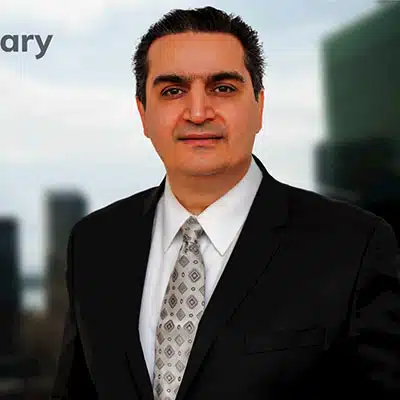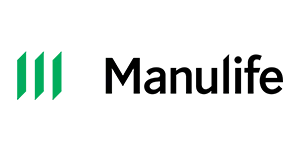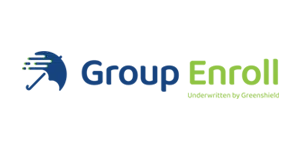When medication costs are no longer an issue
The Trillium Drug Program is Canada’s attempt to battle modern-day financial issues for Ontario residents in need. With this drug plan, eligible residents of Ontario can be assisted in buying prescription drugs or other necessary medical accessories if they find themselves in a situation where their annual income can’t cover medicine costs (even if they already have a private or group insurance health plan).
The world is moving so fast that we now have pills or shots that relieve or even cure and reverse symptoms of most conditions that were considered invincible just ten or twenty years ago.
The problem arises in cost – as medication becomes more and more available, the prices seem to rise accordingly. As reported by Statista the minimal daily expenditure in treating both rare and common (but complicated) conditions is well over 100 CAD, while yearly costs of treatment can go well over half a million CAD. Contradictory, according to Workopolis – the average Canadian pay is around 900 CAD per week (or 50,000 CAD annually), while Financial Post claims that the current average CPP retirement pension is only around 8,000 CAD per year.
Taking into account all of these numbers, you might be wondering – what if there are meds that could help me, but I can’t afford them? Ontario has found a solution to tackling these financial barriers between common citizens and their healthcare, and that is the Trillium Drug Program.
Table of Contents
What is the Trillium Drug Program?
The Trillium Drug Program also called the Trillium Drug Plan (TDP) is a program that offers financial assistance for Ontario residents who have high prescription drug costs in relation to their net household income.
TDP is meant to help those who aren’t eligible for another ODB program and those whose private insurance plans or other insurance plans aren’t sufficient enough.
Before your TDP can be activated, you must spend a deductible that is calculated based on the combined annual income of your household members, as well as spend the maximum amount of your private insurance plan and/or group plan. After you have exhausted all of these resources, your TDP will be activated and the only payment you will need to make is the prescription – and not the medicine itself.
How does the Trillium Drug Plan work?
You need to apply with detailed information about your household’s annual income and the employment status of your household members, your medical history, the medicine you need, as well as a transparent report regarding any private or group insurance plans that also assist your prescription drug costs.
Before applying, make sure that you meet the criteria, or otherwise, your application won’t be valid.
If you’re accepted, you will have to agree on a starting date in the benefit year of your Trillium Drug Plan. After this date, any expenses past your private insurance plan and your calculated deductible will be covered by the TDP completely (excluding the small fee of your actual prescription).
How do I apply?
First of all, you need to download and fill in the Application form and send it to the ministry of Health and Long-Term Care. It takes 7-17 business days for your application to be reviewed and responded to. If nobody reaches out to you within this given time frame, you can contact the TDP office for more information.
Note that if you need an urgent TDP for a lethal condition, then your doctor or care worker needs to submit an urgent application that will be reviewed within the next 48 hours.
After you have been accepted, you will have to provide receipts and other medical documents and records that justify your prescription (including a potential EAP – more info in the next section). You also need to provide the TDP with receipts showing what amount your other health insurance plans cover (if you have any).
The drug support benefit year is marked from the first of August to the 31st of July the following summer. This means that the earliest prescription coverage by Trillium Drug Benefits you can get is after the first of August in the year in which you applied (and got accepted), and the latest prescription covered needs to be in July of the next year. Any prescriptions before or after this time frame will not be covered.
You can choose another starting date if your treatment is not year-long (or you have any other reason to postpone your TDP). This means that you can set your start date to be, for example, the 15th of March. Note that in this case, you will still need to reapply to continue with the support after July the 31st as your support year, too, will expire at this set date regardless of the fact that you only received about four months of coverage.
You can also receive support retroactively, in which case you can submit your application no later than September 30th of that benefit year (i.e. if you want to receive support for the benefit year of 2018/2019, your application must be postmarked by Canada Post before the 30th of September 2019).
In the same sense, all your receipts need to be submitted no later than three months after the end of the benefit year (in this example, that would be the 31st of October).
The Complete Guide to Group Pension Plans in Canada
In this group guide, we will explain the importance of Group Pension Plans in Canada, the benefits, different plans available, cost, fees, FAQs, etc.
What are covered?
The Trillium Drug coverage includes all prescription drugs listed on the Ontario Drug Benefit Formulary / Comparative Drug Index (Formulary). The ODBF database is public and free to use on their website where you can search all registered drugs by generic or brand name, manufacturer, therapeutic classification, or even by a specific keyword. There are over 3,800 quality-assured prescription drug products on the list (expansive, but commonly prescribed medication for more common and familiar conditions), and over 450 limited-use drug products (LU products need a prescription with a special doctor’s confirmation that you meet specific criteria).
That doesn’t necessarily limit this list to medicine only – there are also nutritional products and supplements, as well as necessary accessories such as diabetic testing agents.
There are also over 850 drugs that are not found on the ODBF because they classify as EAP-category drugs (Exceptional Access Program). Your doctor needs to file an EAP request alongside a detailed explanation of your condition and medical history to the TDP in order for an out-of-list drug to be cost-covered. These precautions come due to risks and complications that some medications might carry with them. If the approval is established, it will have a limited time frame, and you and your doctor need to file a new EAP request at least six weeks before the expiry of the first one if you want to avoid taking treatment brakes.
Who is eligible for the Ontario Drug Benefit Program?
TDP has created some standards for its program that are intended to keep applicants at the same level and avoid giving benefits to a certain group of people over another. This means that you cannot be an outsider looking for financial help from Ontario, you cannot have any additional income that could easily cover the cost of your medication, and you cannot be part of the program if you are not in the financially-endangered category.
The requirements are:
- That you are a resident of the city of Ontario with a valid OHIP (Ontario Health Insurance Policy).
- That drug costs for the vital medication in your household exceed at least four percent of your household’s total net income.
- That you do not have private insurance that covers 100% of your drug costs.
- That you are not eligible for another program of the ODB (Ontario Drug Benefit) by being in a certain recipient category (65+, long-term care home resident, requiring special care services, a social assistance recipient…).
Do you need to pay anything?
While TDP does cover the cost of your medication, it is not completely free – you need to pay a deductible which costs approximately 4% of your household’s total combined net income calculated annually. After this, you can take advantage of your own Trillium Drug Plan based on when you have decided to mark your benefit year starting date.
The benefit year is spread throughout four quarters – August-September-October, November-December-January, February-March-April, and May-June-July.
It is on you to pay the amount equivalent to 1/4 of your deductible within one quarter, and then all following medication until the quarter ends is covered by the TDP – you only pay for your prescriptions (up to 2 CAD).
In an example, your deductible is 800 CAD and you applied for an entire benefit year. This means that in August, you first need to spend 200 CAD on medication with your OHC for the TDP benefits to be “activated”. After this, the only fee you pay up until the first of November (when the second quarter begins) is ODB eligible prescription fees (up to 2 CAD), while the rest is covered by the TDP.
Note that this applies to costs outside of your private insurance plan (be it an individual or group plan, program or account that you use to cover your prescription bills and that is not part of the ODB).
Where can I find more information on TDP?
You can check out more details about the TDP on Ontario’s official governmental website or through this downloadable TDP guide. You can also talk to a local pharmacist. If you prefer digital communication, you can send an email to [email protected] or you can inform yourself by calling 416-642-3038 (Toronto) / 1-800-575-5386 (toll-free).
Still not enough prescription drugs coverage?
Most employers offer health insurance as part of their employee benefits package. This is often a government-mandated requirement, but it sometimes depends upon where you live. If your employer does not offer health insurance, you can also purchase a policy directly from an insurer.








